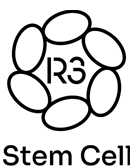NK vs T Cells
Natural Killer (NK) Cells Vs T cells
Natural Killer (NK) cells and T cells are both critical components of the immune system, but they differ significantly in their roles, mechanisms, and characteristics. Here’s an explanation of their differences:
Immune System Classification
- NK Cells: Belong to the innate immune system, providing a rapid but non-specific response to infected or abnormal cells.
- T Cells: Are part of the adaptive immune system, which provides a slower but highly specific response to pathogens.
Activation Requirements
- NK Cells: Do not require prior exposure to a pathogen. They recognize stressed, infected, or tumor cells by detecting the absence of normal self-markers like MHC class I or the presence of stress-induced molecules.
- T Cells: Require antigens to be presented by MHC molecules on antigen-presenting cells (APCs) to become activated.
Receptor Types
- NK Cells: Use germline-encoded receptors (e.g., Killer Immunoglobulin-like Receptors [KIRs], NKG2 family) that are not specific to individual pathogens.
- T Cells: Use highly specific T Cell Receptors (TCRs) that recognize a unique antigen-MHC complex.
Antigen Recognition
- NK Cells: Do not recognize specific antigens. They rely on a balance of activating and inhibitory signals to determine whether to kill a target cell.
- T Cells: Recognize specific antigens presented by MHC molecules. CD8+ T cells interact with MHC class I, while CD4+ T cells interact with MHC class II.
Memory
- NK Cells: Generally do not have long-term memory, though some subsets exhibit memory-like properties.
- T Cells: Have immunological memory, enabling a faster and stronger response upon subsequent exposure to the same pathogen.
Function
NK Cells:
Provide early defense by targeting virus-infected cells or tumor cells, especially those with downregulated MHC class I expression (a common immune evasion strategy of pathogens and tumors).
T Cells
CD8+ T Cells: Kill infected or abnormal cells directly.
CD4+ T Cells: Help orchestrate the immune response by activating other immune cells (e.g., B cells, macrophages).
Cytotoxic Mechanisms
NK Cells:
Use perforin and granzymes to induce apoptosis in target cells. They also employ antibody-dependent cellular cytotoxicity (ADCC) when antibodies bind to target cells.
T Cells
CD8+ T Cells: Use perforin, granzymes, and the Fas-FasL pathway to kill infected or cancerous cells.
CD4+ T Cells: Primarily secrete cytokines to modulate the immune response.
Cytokine Production
NK Cells
Produce cytokines like IFN-γ and TNF-α to enhance the immune response and recruit other immune cells.
T Cells
CD4+ T cells (helper T cells) secrete cytokines based on their subtype (e.g., Th1, Th2, Th17) to influence immune responses.
CD8+ T cells can also produce cytokines, though their primary function is cytotoxic.
Response Speed
- NK Cells: Act immediately and do not require prior sensitization.
- T Cells: Require activation, clonal expansion, and differentiation, making their response slower during the first encounter with a pathogen.
Role in Immune Surveillance
- NK Cells: Detect and eliminate cells with low or absent MHC class I expression, a common feature of cancer and virally infected cells.
- T Cells: Require MHC expression for antigen presentation and activation, making them dependent on functional APCs and infected cells displaying the pathogen's antigens.
Summary
NK cells are the rapid responders of the innate immune system, focusing on general threats without requiring prior sensitization. In contrast, T cells are part of the adaptive immune system, offering highly specific, long-term responses that adapt to specific pathogens or abnormal cells after being activated. Together, they form a complementary defense mechanism to protect the body from infections and malignancies.
NK Cell Therapy Is Available In Tijuana MX and Islamabad, Pakistan
